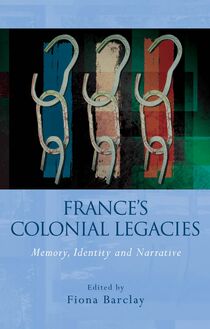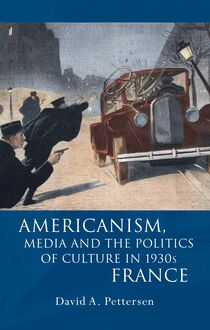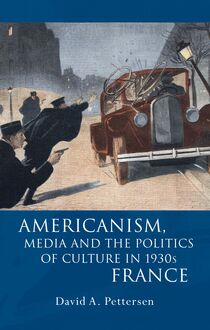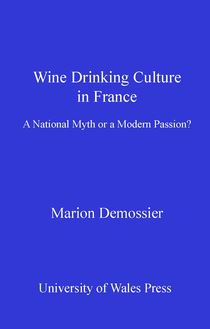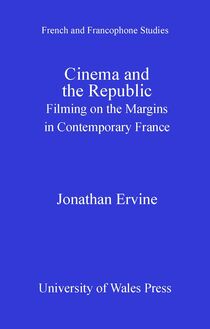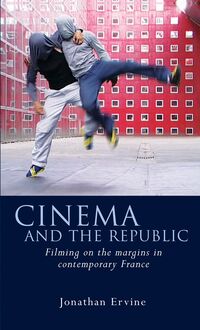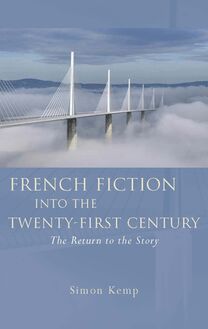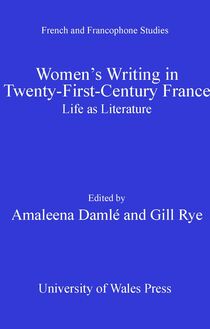-
 Univers
Univers
-
 Ebooks
Ebooks
-
 Livres audio
Livres audio
-
 Presse
Presse
-
 Podcasts
Podcasts
-
 BD
BD
-
 Documents
Documents
-
- Cours
- Révisions
- Ressources pédagogiques
- Sciences de l’éducation
- Manuels scolaires
- Langues
- Travaux de classe
- Annales de BEP
- Etudes supérieures
- Maternelle et primaire
- Fiches de lecture
- Orientation scolaire
- Méthodologie
- Corrigés de devoir
- Annales d’examens et concours
- Annales du bac
- Annales du brevet
- Rapports de stage
La lecture à portée de main
Vous pourrez modifier la taille du texte de cet ouvrage
Découvre YouScribe en t'inscrivant gratuitement
Je m'inscrisDécouvre YouScribe en t'inscrivant gratuitement
Je m'inscrisEn savoir plus
Vous pourrez modifier la taille du texte de cet ouvrage
En savoir plus

Description
Sujets
Informations
| Publié par | University of Wales Press |
| Date de parution | 15 octobre 2012 |
| Nombre de lectures | 0 |
| EAN13 | 9781783165391 |
| Langue | English |
| Poids de l'ouvrage | 1 Mo |
Informations légales : prix de location à la page 0,1250€. Cette information est donnée uniquement à titre indicatif conformément à la législation en vigueur.
Extrait
FRENCH AND FRANCOPHONE STUDIES
Mindscapes of Montréal
Series Editors
Hanna Diamond (University of Bath)
Claire Gorrara (Cardiff University)
Editorial Board
Ronan le Coadic (Université Rennes 2)
Nicola Cooper (Swansea University)
Colin Davis (Royal Holloway, University of London)
Didier Francfort (Université Nancy 2)
Sharif Gemie (University of Glamorgan)
H. R. Kedward (Sussex University)
Margaret Majumdar (Goldsmiths College,
University of London)
Nicholas Parsons (Cardiff University)
Mindscapes of Montréal
Québec’s urban novel, 1960–2005
Ceri Morgan
© Ceri Morgan, 2012
All rights reserved. No part of this book may be reproduced in any material form (including photocopying or storing it in any medium by electronic means and whether or not transiently or incidentally to some other use of this publication) without the written permission of the copyright owner except in accordance with the provisions of the Copyright, Designs and Patents Act 1988. Applications for the copyright owner’s written permission to reproduce any part of this publication should be addressed to the University of Wales Press, 10 Columbus Walk, Brigantine Place, Cardiff, CF10 4UP.
www.uwp.co.uk
British Library CIP
A catalogue record for this book is available from the British Library.
ISBN 978-0-7083-2533-9
e-ISBN 978-1-78316-539-1
The right of Ceri Morgan to be identified as author of this work has been asserted in accordance with sections 77, 78 and 79 of the Copyright, Designs and Patents Act 1988.
Cover: The Vieux Port and skyline of Montreal © Tibor Bognar/Corbis.
For my parents, Lynne and Cledwyn Morgan
Contents
Series Editors’ Preface
Acknowledgements
Introduction
Chapter One: The Manichean City: The Modern City
Chapter Two: The City as Site of Trauma
Chapter Three: The Spectacular City
Chapter Four: Mixité in Montréal
Chapter Five: Montréal as Metropolis: The Globalised City
Chapter Six: Microspaces
Conclusion
Notes
Appendix: Novels and Critical Texts Translated into English
Bibliography
Series Editors’ Preface
This series showcases the work of new and established scholars working within the fields of French and francophone studies. It publishes introductory texts aimed at a student readership, as well as research-orientated monographs at the cutting edge of their discipline area. The series aims to highlight shifting patterns of research in French and francophone studies, to re-evaluate traditional representations of French and francophone identities and to encourage the exchange of ideas and perspectives across a wide range of discipline areas. The emphasis throughout the series will be on the ways in which French and francophone communities across the world are evolving into the twenty-first century.
Hanna Diamond and Claire Gorrara
Acknowledgements
I shall begin by thanking the person who set me along the path of working on Québec literature, society and culture, namely Bill Marshall, who has been, in his idiosyncratic way, inspirational. This book could not have been written without support. To this effect, I should like to thank Keele University for providing me with research leave. I should also like to thank the Arts and Humanities Research Council (AHRC ) for a matching leave award in 2007. I spent part of this time as Eakin Fellow at the McGill Institute for the Study of Canada (MISC). I am extremely grateful to the Eakin family for this opportunity, especially to Gail Eakin and Desmond Morton, who went out of their way to make me feel welcome. This period was a very important time in my life: many thanks go to Will Straw, then acting director of MISC, for integrating me into the life of the centre, for being an excellent academic role model and for providing much in the way of stimulating and entertaining conversation. Funding for research on the ‘bof generation’ novel came from a Government of Canada Faculty Research Programme award in 2005. Part of chapter 3 has been published as ‘Spectacular sexualities on la Sainte-Catherine’, London Journal for Canadian Studies , 22 Gender and the City (2006–7), 127–40. See http://www.canadianstudies.net/lccs/LJCS/Vol_22/index.html . I should like to thank M. Marcel Lévesque at la Société de Transport de Montréal (STM) for granting me permission to use an STM image. I am grateful to Sarah Lewis and her colleagues at the University of Wales Press for their support, encouragement and advice.
My initial fieldwork in Québec was as a stagiaire de recherche at l’Université du Québec à Montréal (l’UQÀM) in 1997. I should like to thank Paul Chamberland for admitting me to the Départment d’études littéraires at that time, and Louise Dupré, Lori Saint-Martin and Barbara Havercroft for allowing me to sit in on their classes. I have retained my association with l’UQÀM and, before the construction of la Grande bibliothèque de Montréal, was granted library rights there on several research visits. In this respect, I am grateful to Max Roy and Michèle Nevert. I am a member of La Traversée: atelier québécois de géopoétique and am indebted to Rachel Bouvet, André Carpentier and others for welcoming me to the group and introducing me to a new way of working, as well as to a host of colleagues and friends. Important amongst these are Daniel Laforest, Audrey Camus and my greatly missed friend, Lucie Tanguay, who died in September 2009. I cannot write about the Saint Lawrence River without thinking of the wonderful boat trip we took along it during a workshop run by La Traversée: photographing each other on the front of the boat, we imagined ourselves to be millionaires.
Other Montréal academics to whom I am thankful for advice, along with interesting and enjoyable discussions, include Sherry Simon, Robert Dion, Annick Germain and David Leahy. I am also grateful to Marie-Jeanne Poirier, a former librarian at la Grande bibliothèque, for so many pleasurable lunches in her company.
Montréal is unimaginable for me without the following people: Martine Delvaux, Élie Beaudoin-Delvaux, Jarrett Rudy, Cynthia Kelly and Mathieu Lapointe. I cannot thank them enough for making a space for me in their lives and for helping to make Montréal what Daniel Laforest calls ‘ma deuxième ville’.
I should have been unable to write this book without the backing of family, friends and colleagues in the UK. I should like to thank my extended family for their enthusiasm for my project and for their patience in seeing it through. Thanks, too, to Pete Griffith, for financial and emotional support at a crucial time. Some of the ideas for this book came out of conversations started a long time ago. I am especially grateful to the geographers, formerly at the University of Southampton, who encouraged me to work on cultural geography despite having no formal training in the discipline, namely Jane Wills, Alison Blunt and David Pinder. Other key people I should like to thank are Dominique Belkadi, Hitomi Tobe, Jeremy Herbert, Ann Ireson, Erica Arthur, John Fagg, Richard Wild, Rosemary Chapman, Céline Gagnon, Nicky Marsh and Liam Connell. Still others include my colleagues in the School of Humanities, the Humanities Research Institute and the Languages Learning Unit at Keele University, including Robin Bell, Ilse Wührer, Concha Perez, Martina Wallner, Simone Clarke, Nathaniel Golden, David Amigoni, Ian Bell and Ann Hughes. Mark Featherstone read a draft of the manuscript and offered invaluable insights over coffee. The activities of the British Association of Canadian Studies, le Groupe de recherches et d’études sur le Canada francophone, the Canada–UK Cities group and the London–Québec Network have all been instrumental in fostering my research. I am particularly grateful to Richard Dennis, Steve Shaw, Leigh Oakes, Karen Fricker, Rachel Killick, Danielle Fuller and Jodie Robson.
Very special thanks go to Ike, Flora and Gwilym for making my life richer than I ever thought possible. Finally, I should like to thank Steve Hewitt, for giving me my heart’s desire.
The Montreal metro map. Reproduced by kind permission of la Société de Transport de Montréal (STM).
Introduction
Station Frontenac. Taking the escalator, he reached his hand inside my skirt. Time suddenly stretched out, and I wanted always to be there: young, beautiful, desired and desiring. 1
This book is about a particular set of mindscapes. Defined by Poul Anderson as ‘geographies of the mind as used in fiction’, mindscapes play an important role in people’s understanding and experiencing of the world. 2 In what follows, I shall look at a number of examples of these kinds of imaginary geographies. Québec’s urban novel is often seen as emerging in the 1940s. Antoine Sirois dates the period 1940–65 as representing a turning point in francophone and anglophone Québec fiction which broke with the past and looked to the city. 3 He attributes this trend to increasing urbanisation that began in the late nineteenth century, with 63 per cent of the population living in cities by 1941 (p. 4). A key early example, namely Roger Lemelin’s Au pied de la pente douce / The Town Below (1944) is set in Québec City. 4 However, it is Montréal that became the preferred setting for this literature. 5 The city has dominated cultural production within Québec. As such, it is a site over which have been projected numerous personal and political desires. This study focuses on the francophone Montréal novel in its analysis of Québécois urban fiction.
Although it is not Québec’s administrative capital, Montréal is the province’s cultural and economic centre. The city is the largest urban conurbation in Québec, having a population of around 1.6 million in its central metropolitan area, and 3.8 million in the greater Montréal region. 6 This is a little under half that of the entire province which, according to Statistics Canada, was around 7.9 million in 2010. 7 Montréal is also the most ethnically diverse city in Québec, with 18.
-
 Univers
Univers
-
 Ebooks
Ebooks
-
 Livres audio
Livres audio
-
 Presse
Presse
-
 Podcasts
Podcasts
-
 BD
BD
-
 Documents
Documents
-
Jeunesse
-
Littérature
-
Ressources professionnelles
-
Santé et bien-être
-
Savoirs
-
Education
-
Loisirs et hobbies
-
Art, musique et cinéma
-
Actualité et débat de société
-
Jeunesse
-
Littérature
-
Ressources professionnelles
-
Santé et bien-être
-
Savoirs
-
Education
-
Loisirs et hobbies
-
Art, musique et cinéma
-
Actualité et débat de société
-
Actualités
-
Lifestyle
-
Presse jeunesse
-
Presse professionnelle
-
Pratique
-
Presse sportive
-
Presse internationale
-
Culture & Médias
-
Action et Aventures
-
Science-fiction et Fantasy
-
Société
-
Jeunesse
-
Littérature
-
Ressources professionnelles
-
Santé et bien-être
-
Savoirs
-
Education
-
Loisirs et hobbies
-
Art, musique et cinéma
-
Actualité et débat de société
- Cours
- Révisions
- Ressources pédagogiques
- Sciences de l’éducation
- Manuels scolaires
- Langues
- Travaux de classe
- Annales de BEP
- Etudes supérieures
- Maternelle et primaire
- Fiches de lecture
- Orientation scolaire
- Méthodologie
- Corrigés de devoir
- Annales d’examens et concours
- Annales du bac
- Annales du brevet
- Rapports de stage
